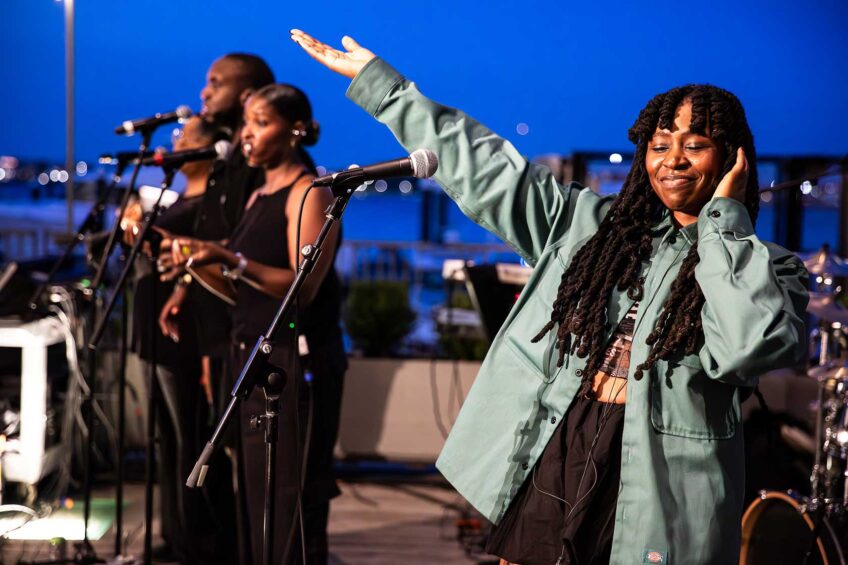
Powerhouse local artists Danielle Abrams and Mary Ellen Strom come together to explore the desegregation of swimming sites along the United States coast in “Rights Along the Shore,” an exhibition running through May 28 in the Mills Gallery at the Boston Center for the Arts.
Years of dialogues and research about waterfront desegregation lay the foundation for this exhibition. In particular, the artists examine New Orleans’ Lincoln Beach, Washington, D.C.’s Anacostia Pool and Boston’s Carson Beach. Violence and neglect mark the history of desegregation at these sites. At Carson Beach in 1975, a peaceful attempt by Black beachgoers to utilize the beach erupted in violence. The incident drew on pre-existing tensions between white South Boston residents and Black Roxbury residents due to school busing efforts.

Washington Evening Star Photo Archive: Pool manager Kermit Stewart looks over the drained Anacostia pool after it was closed in June 1949. Performance and video from WATERMARK: ANACOSTIA POOL 1949-2022 by Danielle Abrams and Mary Ellen Strom. PHOTO: COURTESY OF DANIELLE ABRAMS AND MARY ELLEN STROM
The exhibition centers on a video installation wherein activists and community leaders from each of these regions discuss the history of their waterfronts and the violence and discrimination that has transpired there. Their words are spliced together with historic photographs from these spaces and a performance by Abrams. Poems by Strom and Abrams also adorn the walls, as do photographic portraits of the many community collaborators they worked with on the project, including Leon Rock, a Columbia Point Projects youth organizer and a key organizer of the Carson Beach protest.
But history and memory aren’t the only tools utilized here. “It was very important not just to look at the history, but to see how that history has shaped Boston today,” says Abrams. This task begins with a video installation of Alicia Baez, a former Roxbury resident who attended South Boston High School, and Caitlyn Murphy, a South Boston resident, educator, and youth advocate who attended high school in Roxbury. The two young women discuss their experiences and provide a template for the greater dialogues and restoration that are needed to heal Boston.
“We wanted to have language that acknowledges the past but also creates a sense of hope,” says Abrams. “We have talked about the buoyancy of water as being an emblem for Black liberation and radical freedom.”
Abrams uses performance and her own experience with a mixed-race identity to explore relationships between racial and ethnic groups. Strom’s project-based artworks, often made in partnership with community organizers, center on social and environmental issues. The artists dedicate this exhibition to Margaret Rose Vendryes, a visual artist and mentor to them who recently passed away.
The opening reception for “Rights Along the Water,” featuring a performance by Abrams, is Friday, April 22 from 6-9 p.m. On Friday, April 15 from 1-4 p.m., a colloquium will be held at the gallery to discuss the research and dialogues around the exhibition. The artists say those conversations, along with breakthrough discussions like the one between Baez and Murphy, are the ideal outcomes of this exhibition.
“All I ever wanted as an artist and an activist is for people to witness,” says Abrams. “What I want more than anything is that an inquiry develops and a discourse develops about racial inequity in Boston and the United States.”







